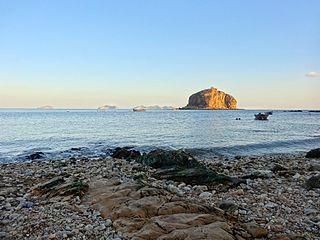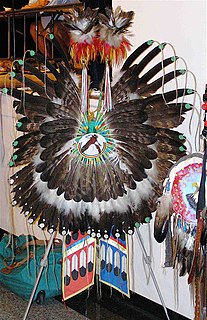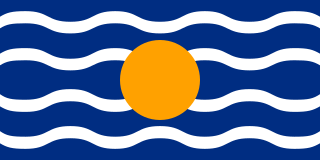 The Indians, with Tortola in the background | |
| Geography | |
|---|---|
| Location | Caribbean Sea |
| Coordinates | 18°19′54″N64°37′44″W / 18.3318°N 64.6288°W Coordinates: 18°19′54″N64°37′44″W / 18.3318°N 64.6288°W |
| Archipelago | Virgin Islands |
| Administration | |
United Kingdom | |
| British Overseas Territory | British Virgin Islands |
| Additional information | |
| Time zone | |
| ISO code | VG |
The Indians are an uninhabited small archipelago of islets in the British Virgin Islands in the Caribbean. They are west of the small British Pelican Island and east of the small US Flanagan Island.

An archipelago, sometimes called an island group or island chain, is a chain, cluster or collection of islands, or sometimes a sea containing a small number of scattered islands.

An islet is a very small island.

The British Virgin Islands (BVI), officially simply the Virgin Islands, are a British Overseas Territory in the Caribbean, to the east of Puerto Rico. The islands are geographically part of the Virgin Islands archipelago and are located in the Leeward Islands of the Lesser Antilles.
They are located south of larger British Tortola Island and east of the large US Saint John Island.

Tortola is the largest and most populated of the British Virgin Islands, a group of islands that form part of the archipelago of the Virgin Islands. It has a surface area of 55.7 square kilometres with a total population of 23,908, with 9,400 residents in Road Town. Mount Sage is its highest point at 530 metres above sea level.

Saint John is one of the Virgin Islands in the Caribbean Sea and a constituent district of the United States Virgin Islands (USVI), an unincorporated territory of the United States.
They were so named because from a distance they were thought to resemble a Native American's head dress.

The Native American bustle is a traditional part of a man's regalia worn during a dance exhibition or wachipi and originates from the Plains region of the United States. In its modern form, the men's bustle is typically made of a string of eagle or hawk feathers attached to a backboard. Eagle and hawk feathers are sacred religious objects to Native American people and the possession of eagle and hawk feathers are protected by the eagle feather law.
The waters around the Indians contain much marine life, [1] and are also the second most popular dive site in the British Virgin Islands after the wreck of the RMS Rhone . The shallower areas of the Indians are also a popular snorkelling site and the area has several mooring balls for day use.

Scuba diving is a mode of underwater diving where the diver uses a self-contained underwater breathing apparatus (scuba), which is completely independent of surface supply, to breathe underwater. Scuba divers carry their own source of breathing gas, usually compressed air, allowing them greater independence and freedom of movement than surface-supplied divers, and longer underwater endurance than breath-hold divers. Although the use of compressed air is common, a new mixture called enriched air (Nitrox) has been gaining popularity due to its benefit of reduced nitrogen intake during repetitive dives. Open circuit scuba systems discharge the breathing gas into the environment as it is exhaled, and consist of one or more diving cylinders containing breathing gas at high pressure which is supplied to the diver through a regulator. They may include additional cylinders for range extension, decompression gas or emergency breathing gas. Closed-circuit or semi-closed circuit rebreather scuba systems allow recycling of exhaled gases. The volume of gas used is reduced compared to that of open circuit, so a smaller cylinder or cylinders may be used for an equivalent dive duration. Rebreathers extend the time spent underwater compared to open circuit for the same gas consumption; they produce fewer bubbles and less noise than open circuit scuba which makes them attractive to covert military divers to avoid detection, scientific divers to avoid disturbing marine animals, and media divers to avoid bubble interference.

RMS Rhone was a UK Royal Mail Ship owned by the Royal Mail Steam Packet Company (RMSP). She was wrecked off the coast of Salt Island in the British Virgin Islands on 29 October 1867 in a hurricane, killing 123 people. She is now a popular Caribbean wreck dive site.














